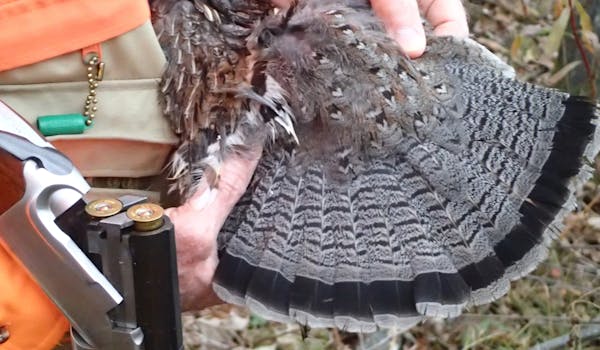Public hunting has opened on 52 acres of former cropland near Wilmont, Minn., priming what will soon become a significant wildlife haven in the southwestern corner of the state.
Funded by state taxpayers under the Legacy Amendment, the $5 million David B. Jones Tract of the Swessinger Wildlife Management Area is 1 square mile of land in transition from intensive row cropping to its former existence as an oasis for ducks, pheasants, deer, bees, birds, butterflies and other natural life.
"It's a once-in-a-lifetime thing for a wildlife manager,'' said Bill Schuna, area wildlife supervisor for the Department of Natural Resources (DNR) in Slayton.
"It's truly one of the centerpieces of wildlife conservation in southern Minnesota,'' said Scott Rall, a conservationist and ardent pheasant hunter from Worthington. "This is a sexy spot when it comes to habitat.''
Conserving such a large, continuous block of land in the depths of Minnesota farm country is uncommon, if not rare. It's an area of the state where 90 percent of prairie wetlands have been drained and nearly all native prairie uplands have been wiped out by agriculture.
The surface water that remains is often severely polluted by the runoff of phosphorus, other farm chemicals and manure.
Schuna said DNR employees will work at the site this week, planting seed for a diverse mix of native prairie plants on 120 acres of high ground. Meanwhile, contractors are vying for the job of restoring 30 wetlands elsewhere on the property. Those remnants of the prairie pothole region have been long lost to farming's artificial drainage systems. The old ditches and tiling will be dismantled or changed to restore natural surface hydrology.
Jon Schneider of Ducks Unlimited, manager of the project, said the 640-acre spread is wedged between two existing wildlife and waterfowl sites. The complex of wetlands and prairie will be large enough and diverse enough for ducks to produce young, he said.
"There's very few places like this that are left in Minnesota,'' Schneider said.
He describes the project as the largest land acquisition and restoration that Ducks Unlimited has tackled in Minnesota. The DNR, he said, has been an integral partner, and none of it would have been possible without a $4.9 million appropriation from the 2015 Legislature. The spending was recommended by the Lessard-Sams Outdoor Heritage Council as part of a larger Ducks Unlimited emphasis on shallow lakes and wetland protection.
"We're so appreciative of the support,'' Schneider said. "DU really didn't have the funds to buy lands in Minnesota before the Legacy Amendment was passed.''
The David B. Jones Tract in the state's Prairie Coteau region, just south of the Murray County line in Nobles County, is named after the land's previous owner. A native of California, the late David Jones moved to Minnesota in his youth, went to high school in Wayzata and built a fortune in the farm management business. When he was 37 years old, he discovered a passion for paleontology while attending Macalester College.
Schuna of the DNR said he first proposed the idea of buying the Jones land in November 2013. At the time, the foundation was selling pieces of marginal farmland to raise money for its nonprofit purpose of amateur paleontology.
In 2015, Ducks Unlimited purchased the property after the DNR appraised it. According to plan, DU completed the project's survey and design work and later transferred ownership of the property to the DNR.
If ground conditions allow for excavation in November and December, Schuna said, landscaping could start and mostly finish before the end of the year. The landscaping will include scraping surface sediment from low areas to reactivate the old seeds of wetland plants, Schuna said.
The transformation also will bring back vegetative buffers to help clean surface water at the top of the watershed that feeds legendary Heron Lake. After the site work is finished in 2017, Schneider said, it will take a couple of years for the new plant life to fully emerge.
"Wildlife will start responding almost immediately,'' he said.
Schuna said the new hunting grounds will be supported by three or four parking areas.
"It's very rare when you get a whole section to work with,'' said Rall, a local Pheasants Forever leader. "I couldn't be happier with the management of this land.''
Video goes viral of man enduring 'shocking' chain whipping on downtown St. Paul street

Wolves, Suns needed time after making big trades
Olympic torch makes Acropolis overnight stop a week before handover to Paris organizers
Mario Andretti offended by F1 rejection. 'If they want want blood, well, I'm ready,' says 1978 champ

